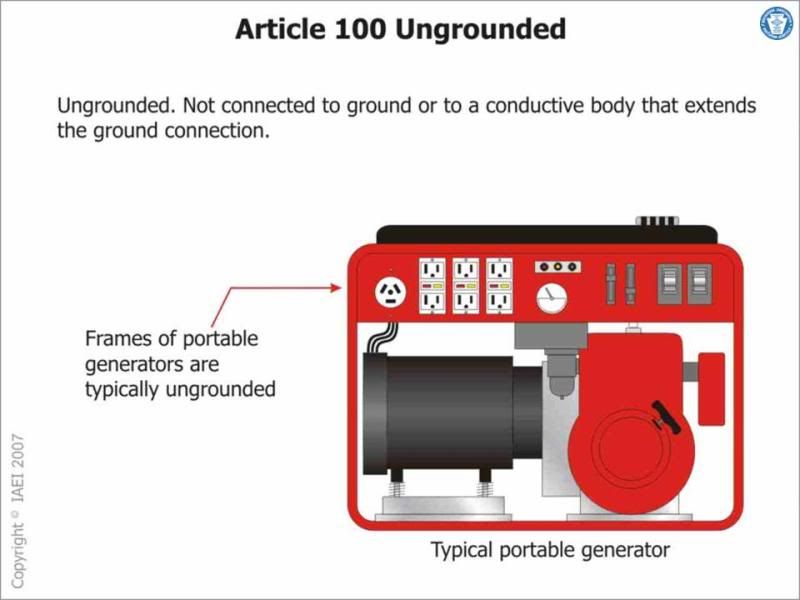The electrical inspector will only look at the point where the generator is being connected to the building to the required transfer switch if the generator and cord is not present during his/her inspection.
Should the portable generator being attached to this male plug meet the requirements of a non-SDS then there is nothing wrong. These generators will most commonly be a tag-along or something that hooks to the back of a tractor or mounted on a vehicle.
Portable generators was first mentioned in the 2002 code cycle in Part III 702.10 where it clearly states that a portable generator that is being used as an optional standby system has to be connected to earth one way or the other. Being installed as a SDS then an electrode as outlined in 250.30 must be installed.
UL in their listing information clearly states that should one such as a pictured be connected to the premises wiring then it must be connected as a SDS and mandates that the equipment grounding conductor be connected to the premises wiring grounding electrode.
As you and others have posted these generators are to be used on clear days and kept out of the rain, snow, ice, mud, ect???.. Then there is the cool down time and waiting for any spilled fuel to dry up that makes using one impractical as an optional standby system.
590 was introduced in the 2005 cycle and has been updated every cycle including some very important information about portable generators.




